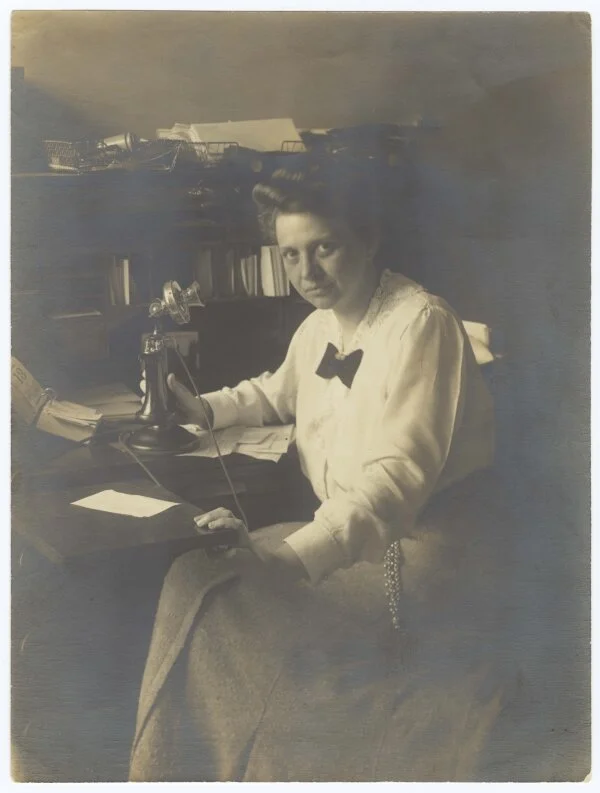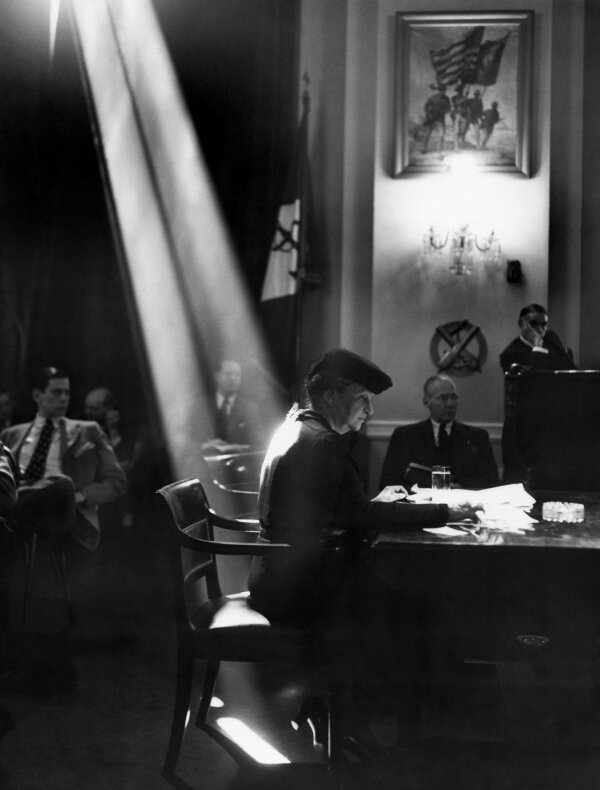Episode 28: Frances Perkins
Fannie Coralie Perkins was born on April 10, 1880 in Boston, Massachusetts. Fannie came from a family that was very conservative, republican, and part of the Congregational Christian Church, a Protestant denomination. Despite this, her family encouraged her to go to school. Fannie enrolled in one of the oldest institutions for women, Mount Holyoke. In college she studied physics, chemistry, and biology. Before she graduated, she also heard a lecture from Florence Kelley. Beginning to make big moves in her career Fannie decided to change her name to Frances. Now Frances was interested in learning about the women in the Hull House settlement and the women working in factories. She spoke to the factory owners to raise workers' wages. Continuing her research she worked in Philadelphia and then New York City. In New York, Frances earned her Master’s Degree in economics and sociology from Columbia University. In 1911 while having tea, Frances witnessed the Triangle Shirtwaist Factory catch fire. Both meeting Florence Kelley and witnessing the horrible accident at the factory became pivotal moments in Frances’ life and propelled her into political activism. Through her connections she made it to New York’s state capital, Albany, to lobby for better working hours for women. She would later become the Executive Secretary for the Committee on Safety for the City of New York. Through this work she became better at lobbying at the state legislature and helped aid the passing of laws such as restricting the hours for women workers, safer factory conditions, establishing space occupancy limits, and securing a minimum wage. In 1926, when Franklin D. Roosevelt became governor - he appointed Frances to become the chairwoman of the Industrial Commission for the state of New York. When he became president in 1933, he asked Frances to serve in his cabinet as the Secretary of the Department of Labor, making her the first woman to serve in the cabinet. Frances played a key role in constructing the New Deal, which includes items like the Social Security Act, the Fair Labor Standards Act, the National Industrial Recovery Act, just to name a few. Perkins left politics and began teaching at Cornell University and other institutions until she died on May 14th, 1965.
Caryatid: Mayor Aja Brown
At the age of 31, Mayor Aja Brown is the youngest mayor ever elected in the city of Compton, CA. Aja has a bachelor’s degree in public housing, urban planning, and development, along with a master’s degree in urban planning with a concentration in economic development from the University of Southern California. Aja launched a 12-point revitalization plan called “New Vision for Compton” which focused on quality of life, youth development, infrastructure, education, and economic development.
References
Downey, Kirstin. The Woman Behind the New Deal: The Life of Frances Perkins, FDR’S Secretary of Labor and His Moral Conscience. First Edition (1st printing), Kindle ed., Nan A. Talese, 2009.
Halley, Catherine. “Frances Perkins: Architect of the New Deal.” JSTOR Daily, 28 Sept. 2020, daily.jstor.org/woman-architect-of-the-new-deal.
History.com Editors. “Frances Perkins.” HISTORY, 21 Aug. 2018, www.history.com/topics/womens-history/frances-perkins.
Sprague, Leah W. “Frances Perkins Center | Her Life: The Woman Behind the New Deal.” Frances Perkins Center, 1 June 2014, francesperkinscenter.org/life-new.Images:
“Her Life: The Woman Behind the New Deal.” Frances Perkins Center, francesperkinscenter.org/life-new/.




